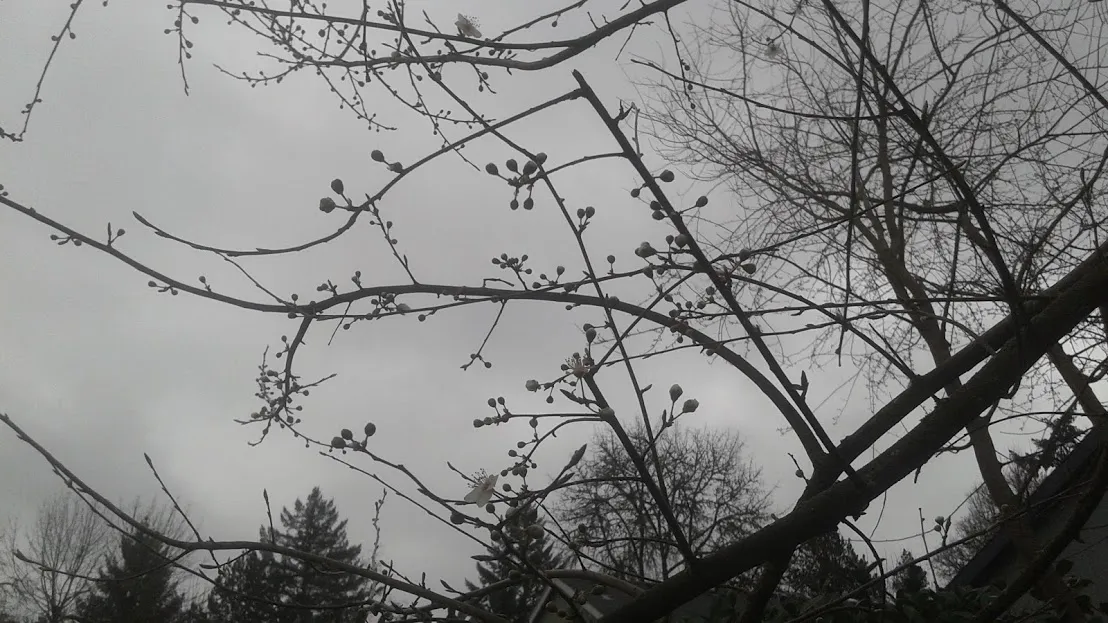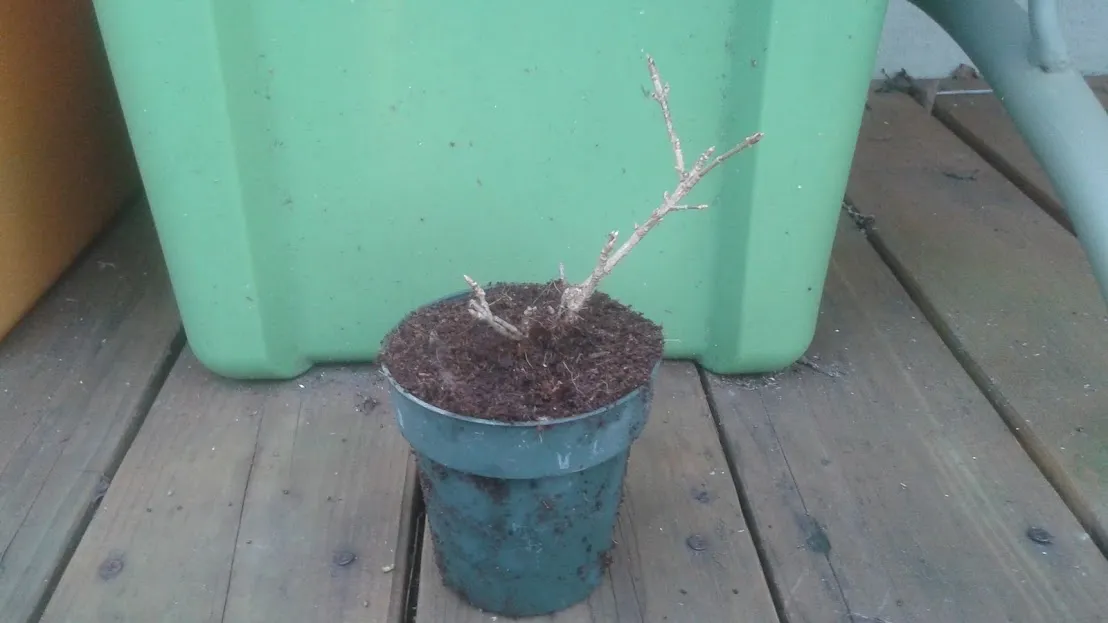
This is one of my forsythia trees, which I'll be pruning and cleaning up by removing all of the dead wood ends.
If you like watching posts about how I prune my young bonsai trees to create a new artistic design from the tree, then you should enjoy this one too.
There is still a possibility that this tree could soon bloom into flowers, so I definitely want to keep many buds on the tree for the next month of growth. Normally I like to wait until a Spring-flowering tree is finished blooming before I remove any buds or branches, to enjoy the maximum number of blooms. Since this tree is so young, it is probably more likely to flower if I help channel its energy into a fewer buds. A petite flowering tree would be very ideal for bonsai.
This tree just came out of its winter blanket, as you can see. It is still covered with a thick layer of coconut fiber to block out drafty wind and ice, while keeping warmer moisture and air near to the root zone. It was actually buried much deeper in coconut fiber to protect it from all sides.
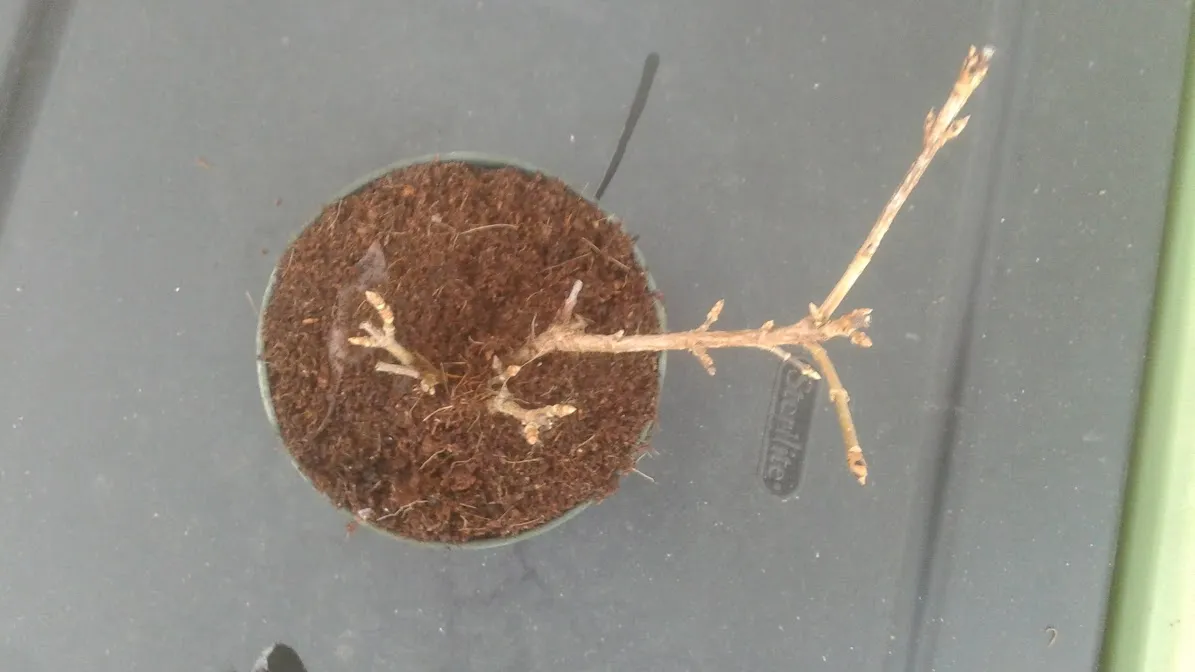
Here we can apply the rule of two, and look for branch junctions where more than two branches are connecting to a single point. This type of tree seems to like breaking that design rule often times by developing buds symmetrically along a main branch.
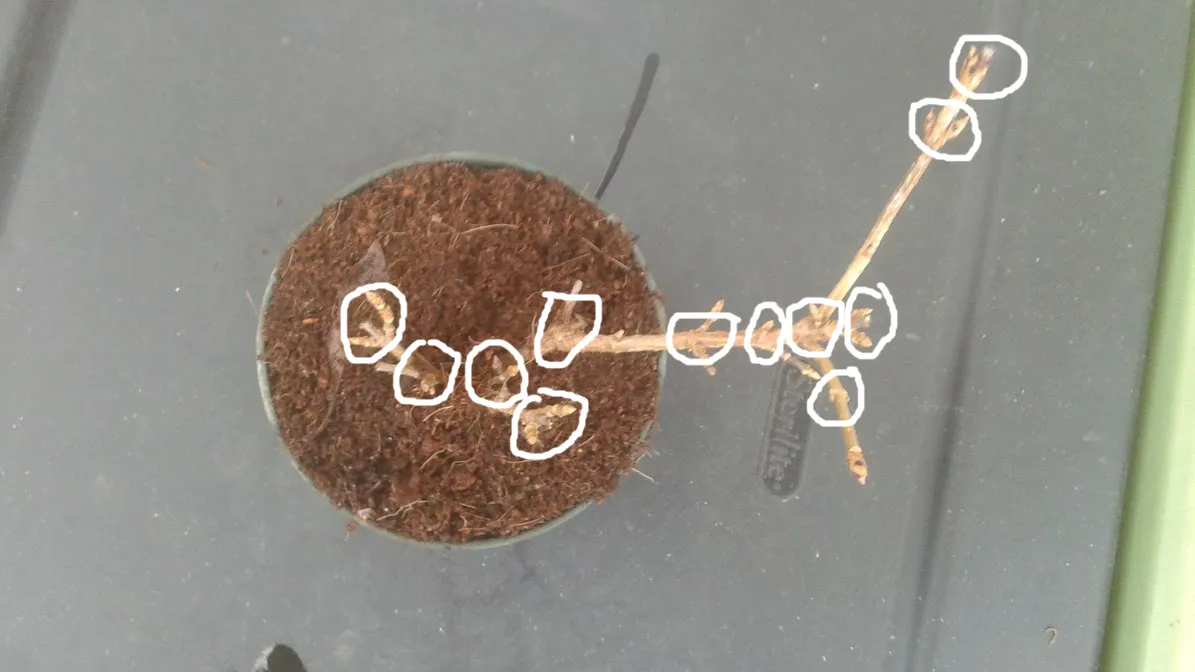
All of the areas I circled in white showed three or more branches growing from a single connection. I don't want to leave them that way, because it will fatten the branch and make it look abnormally swollen and unbalanced.
Each time more than two branches or buds are found at an intersection, I will have to select only two to keep, and everything else at the same junction will be cut off. I will try to alternate which side of the branch I remove something from, to keep a nice array of fan-shaped branches around the main branch.
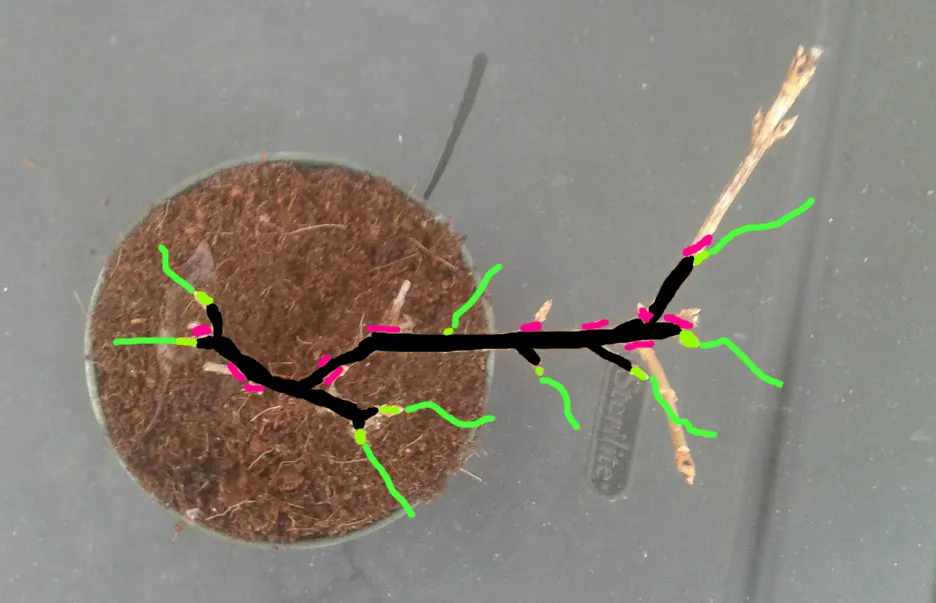
In this photo I've painted some lines as guides. The black is the branches of the tree that will be maintained, and the magenta marks are the cut lines for branches and buds to be removed. The yellow and green show the remaining buds, and the direction they are likely to grow.
The only other branch I made a key decision on was the upper right branch which I shortened by a lot. The distance of that branch exceeding in a straight line and even thickness from the main branch was becoming too dominant, so I decided to prune it back to the bud nearest to the main branch. I think that helps the end of the branch look more proportional to the other buds that will be forming branches near this area. The result will be thinner, and shorter branches growing from all of these buds in this area. It will also cause more leaves to grow and fill in this area, closer to that side of the branch.
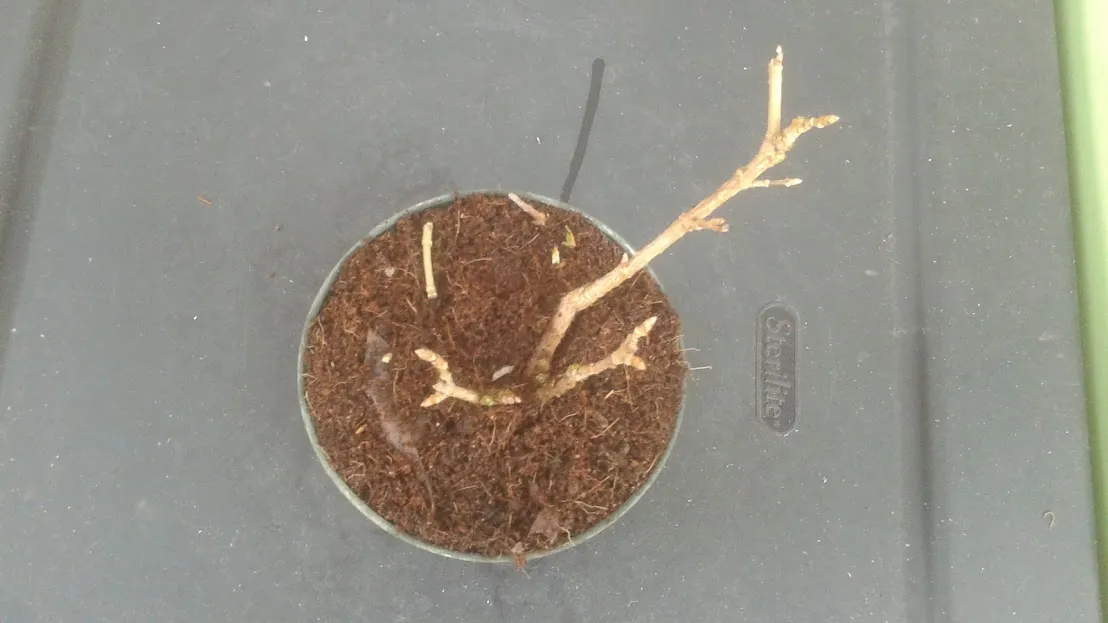
Here's all that's left. It isn't very old yet, so we'll have to wait a few more years to see what it does. I like that it is very small right now, and has a lot of potential to continue to divide into smaller and smaller branches out from a trunk that splits into a triangular top shape, and a wide open vase-like shape from the side view. For some reason I've always liked isosceles triangles as my favorite shape, so you may find them showing up in many of my designs.
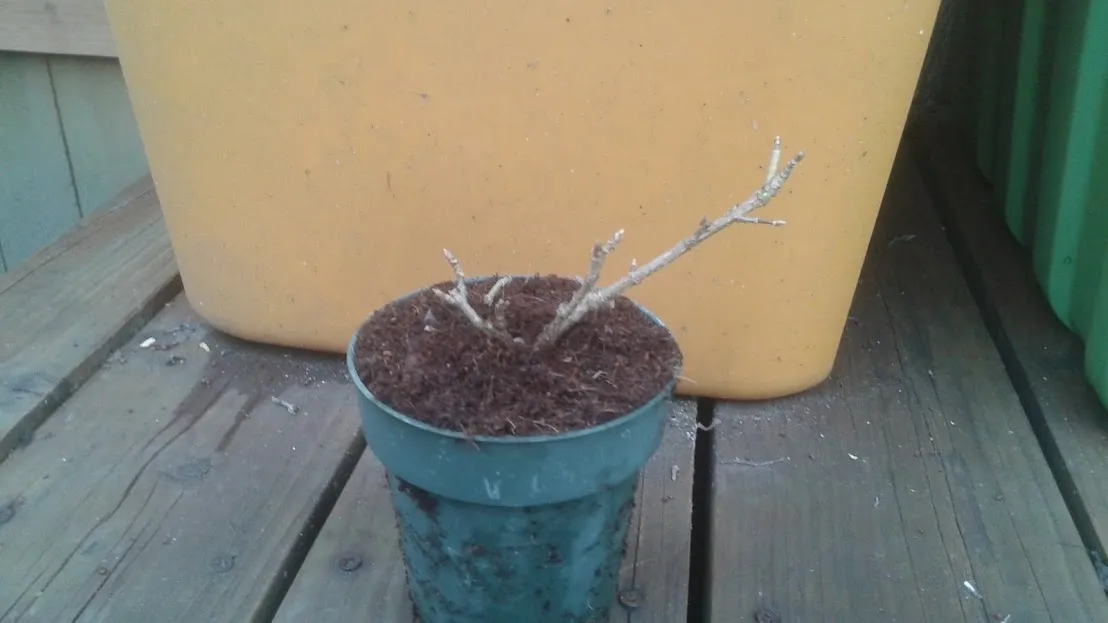
And this is the final after photo, above.
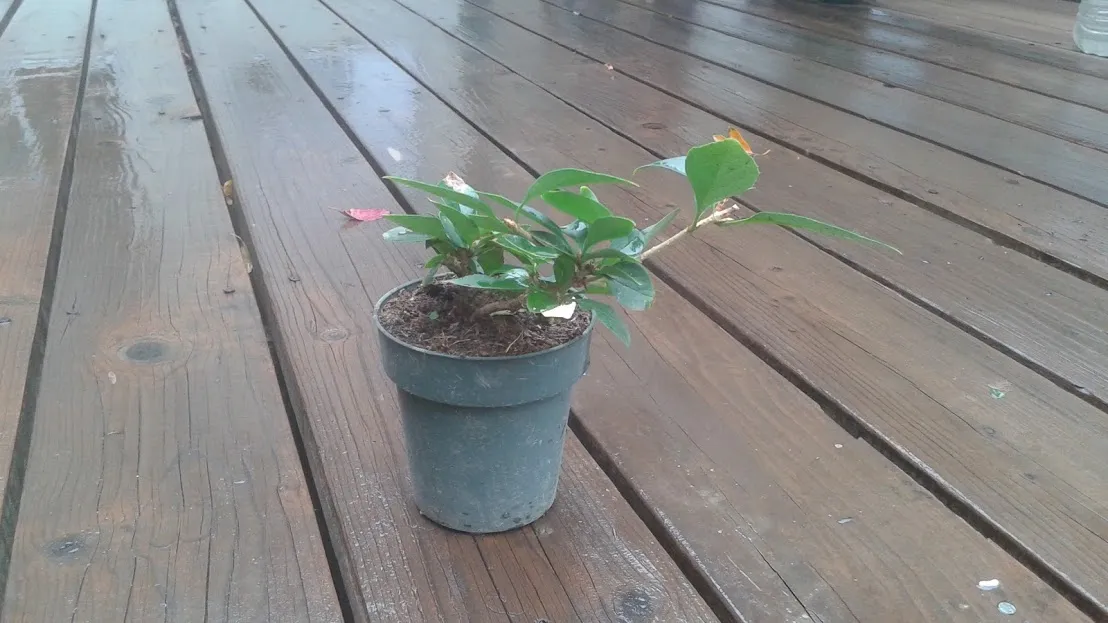
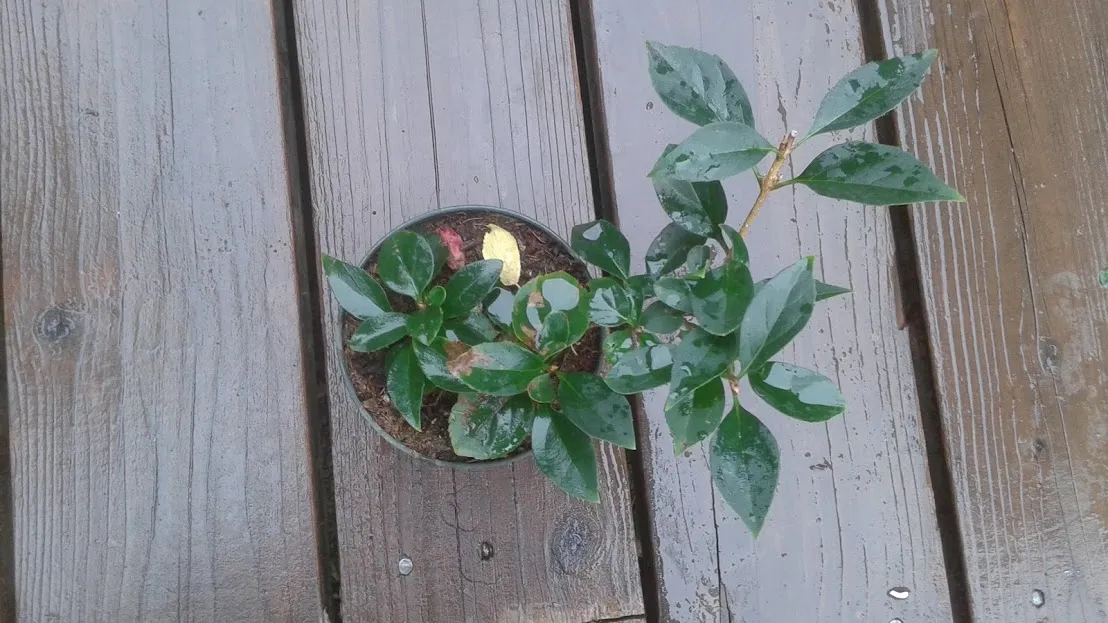
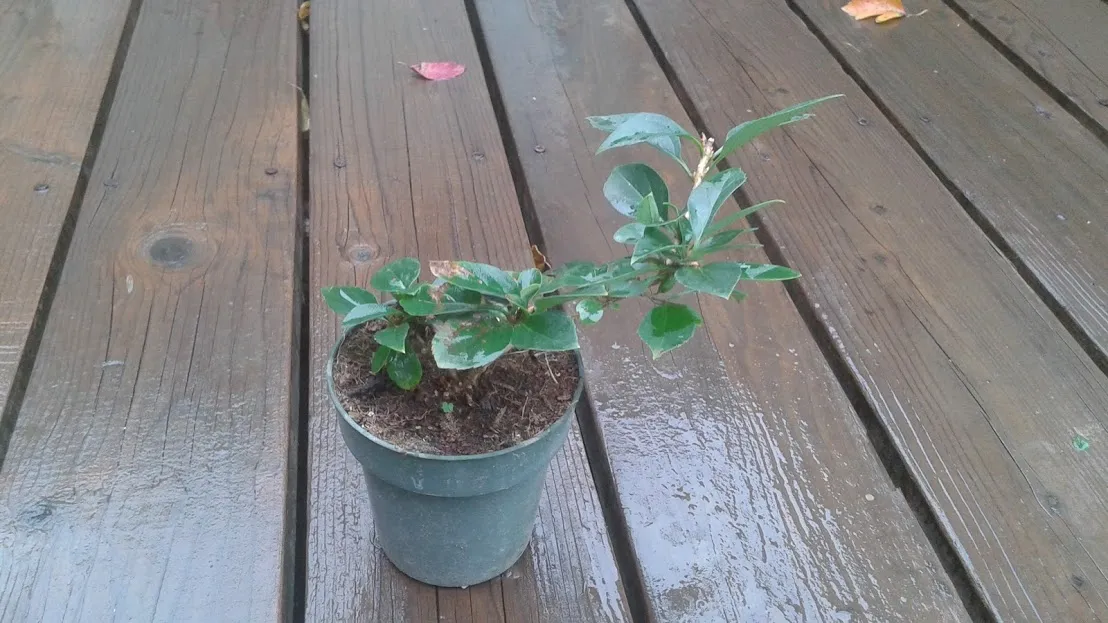
And here is what it looked like this past year when it was covered in luxurious green leaves.
Hope you enjoyed this post. I have several more bonsai trees I will be sharing in the week coming up.
Stay warm and healthy.
